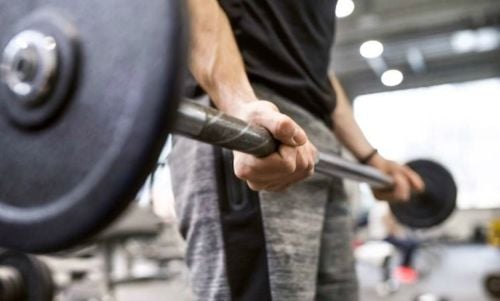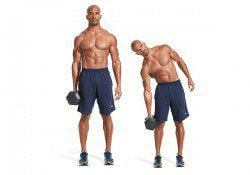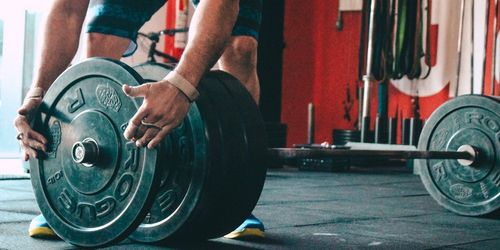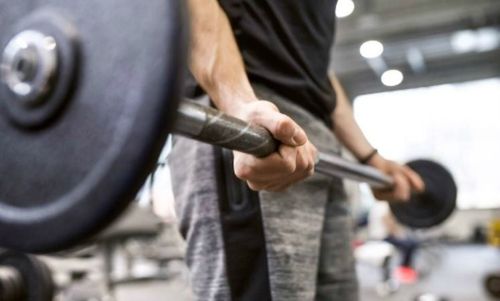This is an automatically translated article.
The health and beauty care industry has always had strange notions, regardless of scientific advice from experts. A question that often comes up in the bodybuilding world is, is weight training short? If you're the parent of a child under 18, you may be wondering if the strength training exercises your child is doing at the gym are slowing down his or her growth?
1. Weight training is short from a scientific perspective
Does weight training make you short? The myth that children will stop growing if they lift weights too young or are short in weight training is not supported by any research or scientific evidence.
The scientific evidence and research to the contrary also strongly supports that properly designed and supervised health training programs provide many benefits for children, including:
Improved health and bone strength index (BSI); Reduce the risk of fractures and reduce the rate of sports-related injuries; Develop confidence and interest in physical activities.
2. Why do people believe that weightlifting is short?
It is very likely that the notion that lifting weights is detrimental to children's growth stems from concerns that children could damage their growth plates if they participate in weightlifting exercises. Exercise requires a lot of strength. Dr Rob Raponi, a naturopath and certified sports nutritionist, says the misconception that lifting weights is dangerous for bone growth stems from from the fact that trauma to the growth plates in immature bones can slow down a child's growth. However, he points out that growth plate injuries can result from poor posture, heavy weights and lack of training. Shortness of weight training is not the result of lifting weights correctly, or better understood, lifting weights correctly does not affect the short or tall issue of the practitioner.In fact, participating in almost any type of sport or recreational activity carries a risk of injury. About 15 to 30% of fractures in children affect the growth plates.
Growth cartilages are cartilage areas of growing tissue at the ends of long bones (eg, the femur). This cartilage turns into hard bone as it matures, before it was in a softer state during development, so the cartilage is very vulnerable. However, just because the growth plate is susceptible to damage does not mean that a teen or teen should avoid lifting weights.
Chris Wolf, DO - sports medicine and regenerative orthopedic specialist at Bluetail Medical Group - says the advice from medical professionals is that weight training in children under 18 is safe when performed right way.
MORE: Does exercise increase height?

Các chuyên gia y tế khuyến cáo người tập nên tập tạ đúng kỹ thuật
3. How to do weight training safely
If you want to start a safe weight training program, there are many things that most people under the age of 18 need to keep in mind including the following:
3.1. Slow Down Conquering heavy weights is not something that can be done overnight. The most important thing about weight training whether at the gym or at home is this: take it slow and progress gradually.
This means that weightlifters who need to start off with a lighter weight, with a higher number of repetitions, should focus on executing the movements and poses rather than the amount on the dumbbell.
3.2. The amount of weight lifted is not determined by muscle size Dr. Alex Tauberg, DC, CSCS, CCSP said, children should not lift weights with the aim of increasing muscle size significantly. In fact, much of the benefit a child gets from lifting weights will be neuromuscular development.
He explains: “When a child is able to lift heavier weights, it is due to increased muscle performance, not increased muscle size.” Training programs should be designed with this in mind.
3.3. Age is just a number Determining when a child or teen is ready to start a weight training program should be made on an individual basis, not by age.
Dr. Adam Rivadeneyra, a sports medicine physician with Hoag Orthopedic Institute, said: “Weightlifting is considered safest and most readily available when the practitioner is aware enough to follow the training rules and must be followed. appropriate training.
3.4. Starting from the basics Dr. Rob Raponi believes: as long as weight training is done safely, with supervision and with enough excitement, there is no wrong age to start resistance training.
Dr. Rob Raponi recommends starting with exercises that improve body weight: “Push-ups, bodyweight squats, sit-ups and planks are great forms of endurance training, safe and without the use of weights.”

Người tập nên bắt đầu từ các bài cơ bản như hít đất
3.5. Proper supervision is key To ensure the safety of a minor or teen interested in strength building, exercises should be supervised by a personal trainer or authorized person. training in how to instruct children to lift weights. If parents have any concerns about your child's participation in a weight training program, talk to your pediatrician before your child begins.
Weightlifting short is a misconception. Therefore, in order for children to develop a comprehensive height and still be able to participate in their favorite weightlifting sports, parents can encourage children to safely do weightlifting. Coaching instructions, combined with a healthy diet.
Please dial HOTLINE for more information or register for an appointment HERE. Download MyVinmec app to make appointments faster and to manage your bookings easily.
Reference source: healthline.com












